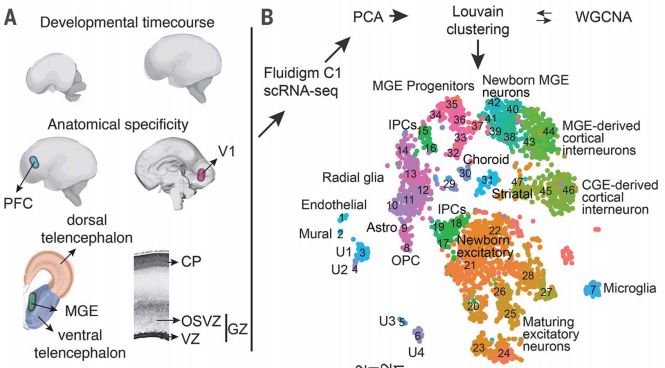《Science》:人脑单细胞基因表达图谱的绘制
人类大脑被称为世上最复杂的物质,里面有860亿错综复杂的、相互连接的神经元和数量同样庞大的胶质细胞。
加州大学旧金山研究所三名年轻学者Tomasz Nowakowski、Alex Pollen、Aparna Bhaduri和他们的博后导师脑发育研究专家Arnold Kriegstein等人,向前迈出了关键的一步。他们绘制的人脑综合基因表达图谱,为解答特定细胞和基因网络如何铸造最复杂的人体器官提供了新的见解。他们所使用的测序平台—Fludigm公司的C1平台,目前浙江大学医学院已有成熟的运作体系。
Title: Spatiotemporal gene expression trajectories reveal developmental hierarchies of the human cortex
英文摘要
Systematic analyses of spatiotemporal gene expression trajectories during organogenesis have been challenging because diverse cell types at different stages of maturation and differentiation coexist in the emerging tissues. We identified discrete cell types as well as temporally and spatially restricted trajectories of radial glia maturation and neurogenesis in developing human telencephalon. These lineage-specific trajectories reveal the expression of neurogenic transcription factors in early radial glia and enriched activation of mammalian target of rapamycin signaling in outer radial glia. Across cortical areas, modest transcriptional differences among radial glia cascade into robust typological distinctions among maturing neurons. Together, our results support a mixed model of topographical, typological, and temporal hierarchies governing cell-type diversity in the developing human telencephalon, including distinct excitatory lineages emerging in rostral and caudal cerebral cortex.
参考链接:http://science.sciencemag.org/content/358/6368/1318/tab-article-info



